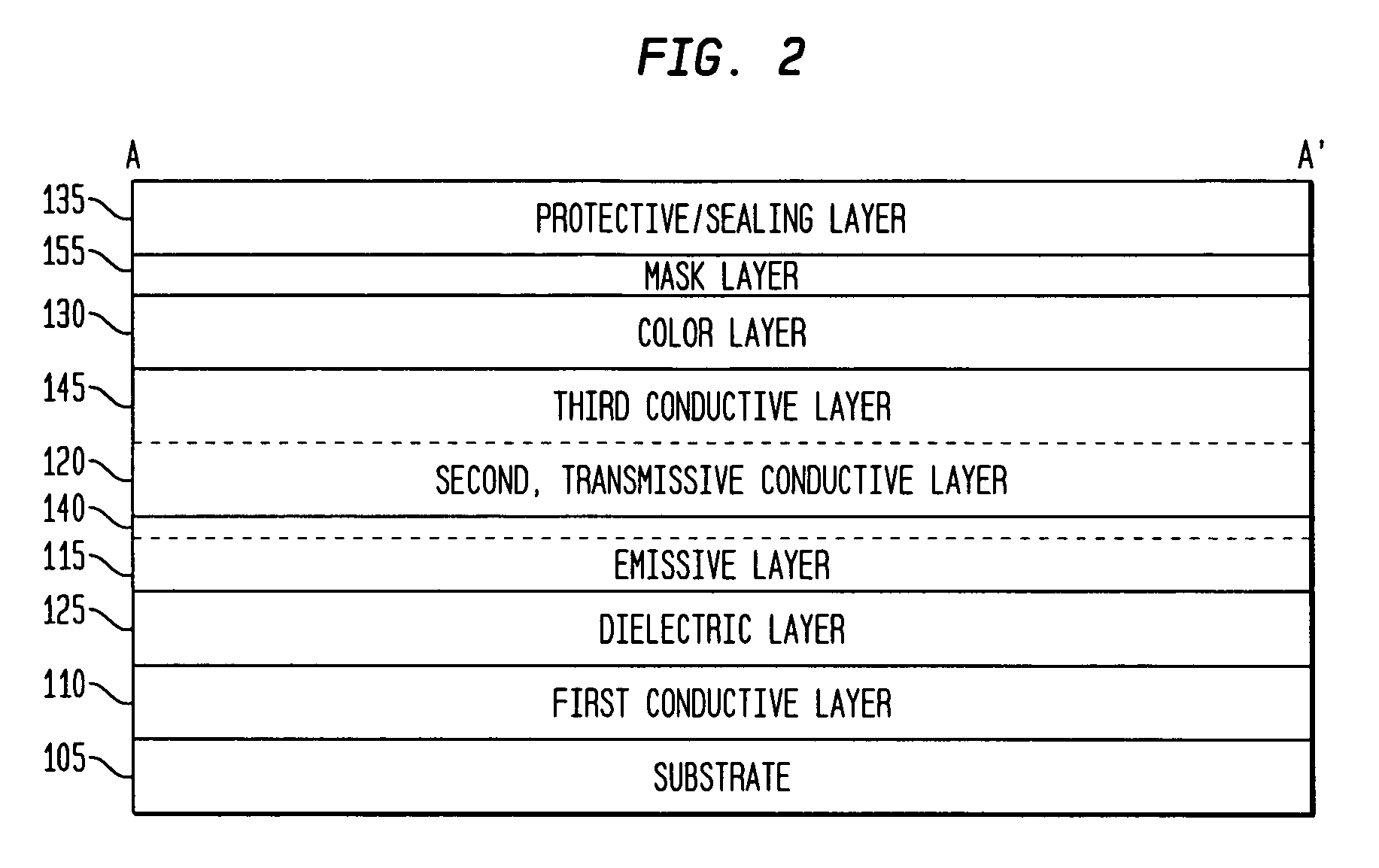Static and addressable emissive displays
a technology of emissive display and static, applied in the field of emissive display technology, to achieve the effect of significant durability and capability, high and unusual robustness, and higher variance within the tolerance of other printing
- Summary
- Abstract
- Description
- Claims
- Application Information
AI Technical Summary
Benefits of technology
Problems solved by technology
Method used
Image
Examples
example 1
Signage
[0148]Using either continuous roll or sheeted substrate, a surface finish coating is applied, in order to smooth the surface of the substrate (on a micro or detailed level). A conductive ink is patterned on the “live” area of the substrate (i.e., the area to be illuminated) by offset printing, and allowed to dry as discussed above. Multiple applications of conductive ink are applied, using the alignment (reduced or choked patterning), and the remoisturizing discussed above. One or more dielectric layers are applied as a patterned coating on the area to be illuminated, and allowed to dry as discussed above. A polymer reflective (or mirror) layer is applied and cured through ultraviolet exposure, providing the plurality of reflective elements or interfaces. An emissive phosphor is applied as one or more patterned coatings on the area to be illuminated, and allowed to dry as discussed above. A clear ATO coating is applied as a patterned coating on the area to be illuminated, and...
example 2
Display
[0149]Also using either continuous roll or sheeted substrate, a surface finish coating is applied, in order to smooth the surface of the substrate (on a micro or detailed level). A conductive ink is patterned as rows (or columns) on this substrate surface using flexographic printing, and allowed to dry as discussed above. Multiple applications of conductive ink are applied, using the alignment (reduced or choked patterning), and the remoisturizing discussed above. One or more dielectric layers are applied as a coating bounded by the area of the active display, and allowed to dry as discussed above. A polymer reflective (or mirror) layer is applied and cured through ultraviolet exposure, providing the plurality of reflective elements or interfaces. An emissive phosphor is applied as one or more coatings bounded by (and slightly smaller than) the area of the active display of the dielectric layer (i.e., choked or slightly reduced area to be within the boundaries of the dielectr...
PUM
 Login to View More
Login to View More Abstract
Description
Claims
Application Information
 Login to View More
Login to View More - R&D
- Intellectual Property
- Life Sciences
- Materials
- Tech Scout
- Unparalleled Data Quality
- Higher Quality Content
- 60% Fewer Hallucinations
Browse by: Latest US Patents, China's latest patents, Technical Efficacy Thesaurus, Application Domain, Technology Topic, Popular Technical Reports.
© 2025 PatSnap. All rights reserved.Legal|Privacy policy|Modern Slavery Act Transparency Statement|Sitemap|About US| Contact US: help@patsnap.com



